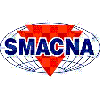WIXOM, Mich. — When you’ve been around as long as Dee Cramer Inc. — the sheet metal and HVAC contractor was founded in 1937 — designing a sheet metal shop is not a novel task.
It’s an activity company officials have done numerous times: It built a massive new 56,000-square-foot headquarters off I-75 in Holly, Michigan, in 2001, and in recent years, it opened facilities in the Michigan communities of Lansing and Wixom. A new shop in Saginaw is currently under construction.
The privately owned Dee Cramer is one of the largest HVAC construction firms in the country. The Engineering News-Record (like Snips, a BNP Media publication) puts the company at No. 355 on its 2016 list of the top 600 specialty contractors in the nation.
Dee Cramer invited Snips into its Wixom shop, located in an industrial park about 30 minutes northwest of Detroit, for a tour and talk about what went in to putting the facility together.
Unlike some sheet metal contractors (see sidebar), Dee Cramer is a company that has long prided itself on being a full-service company, with large commercial and residential service operations.
“We pretty much do it all ourselves,” said Glenn Lamb, a 25-year Dee Cramer employee who works as the company’s fabrication division manager.
After almost eight decades in business, officials say they typically know how they want a shop to function when they move in or build a structure.
“We pretty much know the flow we want,” Lamb said.
The Wixom facility is 20,000 square feet with three loading docks running in and out of the rectangular-shaped building. It has a 6-foot coil line from Engel and a Vicon plasma cutting table. Lamb estimates that Dee Cramer processes around 50,000 pounds of ductwork here each month. About nine people work in the sheet metal shop.
One practice that the company has discovered improves shop efficiency is the use of carts wherever possible.
“We always try to keep it moving in one direction,” he said. “Always keep it moving toward the dock.”
Like many shops, workers try to minimize steps. Duct-forming machinery is situated close to cutting tables, and parts of the floor have mats and other materials that make the ductwork easier to move around.
“If I have to touch the duct more than once, I’m wasting money,” Lamb said.
For reprints of this article, contact Jill DeVries at (248) 244-1726 or email devriesj@bnpmedia.com.
















